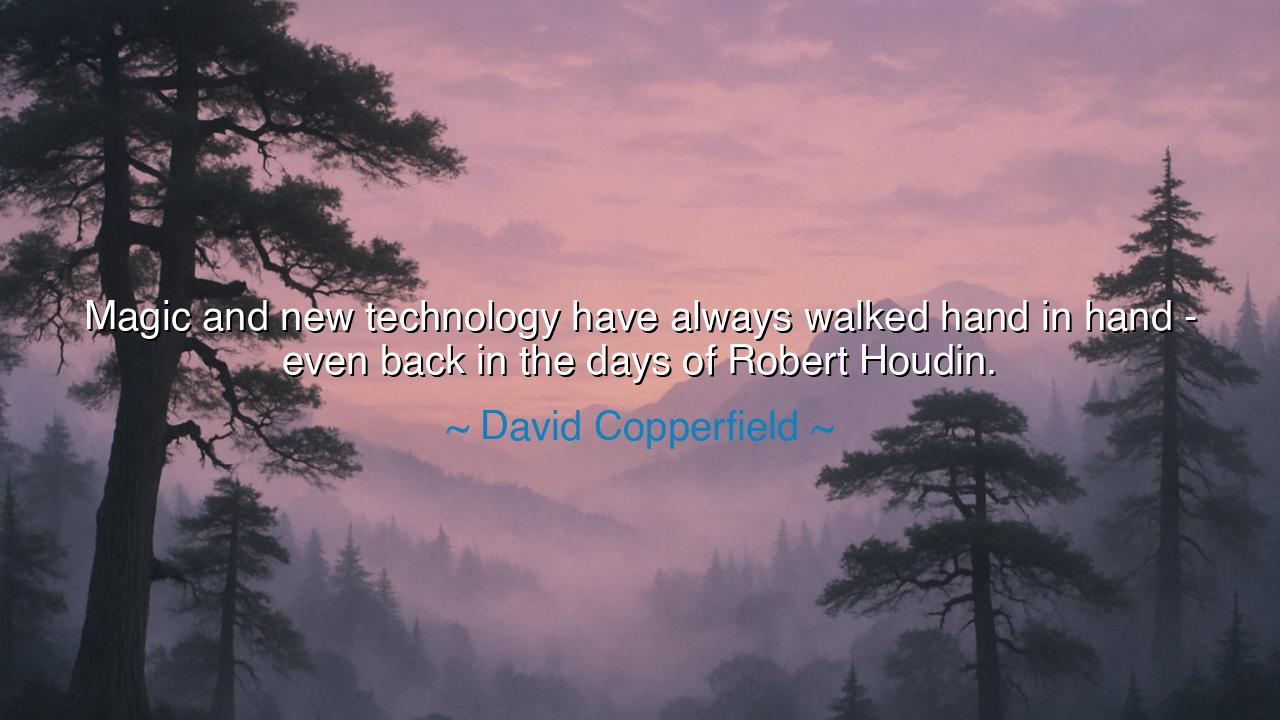
Magic and new technology have always walked hand in hand - even
Magic and new technology have always walked hand in hand - even back in the days of Robert Houdin.






David Copperfield, master of illusion and heir to a long tradition of wonder, once proclaimed: “Magic and new technology have always walked hand in hand—even back in the days of Robert Houdin.” These words, though spoken of stagecraft, echo across centuries, reminding us that what men call magic is often the first glimpse of technology not yet understood. To the human eye, the marvelous and the mechanical have forever been intertwined, each amplifying the other, each revealing humanity’s hunger for awe and discovery.
The heart of his saying lies in the connection between imagination and invention. Magic stirs the soul because it hints at the impossible; technology fulfills that hint by making the impossible real. Copperfield reminds us that this union is no modern phenomenon—it stretches back to Robert Houdin, the father of modern magic, who in the nineteenth century stunned audiences with automata and mechanical wonders. To his spectators, they were enchantments; to us, they are early examples of engineering and the clever use of science cloaked in artistry.
Consider Houdin’s famous automaton, a figure that could seemingly write, draw, or perform tricks by its own will. To the audiences of his day, this was sorcery. Yet beneath the costume of mystery lay gears, levers, and mechanisms—technology disguised as enchantment. What Houdin understood, and what Copperfield reminds us, is that magic is not simply deception but the artful application of the tools of an age, always standing at the boundary where knowledge meets wonder.
History bears further witness to this truth. When the first hot air balloons rose above France, the peasants looked skyward and saw sorcery; when electricity first lit the streets of Paris, many believed it was a dangerous witchcraft. Again and again, new technology appeared as magic, and only in time did men understand its workings. The boundary between illusion and invention has always been thin, for both are born from the same wellspring—the desire to make the impossible possible.
Copperfield himself stands within this tradition. His great illusions, whether vanishing the Statue of Liberty or walking through the Great Wall of China, depended not on spells but on the clever harnessing of stagecraft, engineering, and design. Yet to the audience, the effect was magic, no less wondrous for being grounded in technology. Here lies the secret: the heart does not hunger for explanation, but for astonishment. Technology serves as the magician’s ally, creating the stage upon which the impossible can unfold before human eyes.
The deeper lesson is that wonder is a vital force in human progress. Without the sense of magic, the drive to invent would wither, for it is the dream of doing what seems impossible that pushes men to create. Without technology, magic would remain empty fantasy, a mere tale without substance. Together, they form a partnership that inspires both the artist and the engineer, the dreamer and the doer. Copperfield’s words remind us that the union of wonder and science is not accidental but essential.
Therefore, O seekers, take this wisdom into your own lives: do not scorn magic, for it awakens your imagination; do not fear technology, for it makes imagination flesh. Instead, see the two as companions on the journey of progress. Cultivate your sense of wonder, and pair it with diligence in study and craft. For as Houdin once transformed gears into enchantments, and Copperfield transformed stagecraft into awe, so too can you transform the tools of your time into marvels that lift the human spirit. In this balance lies the secret of creation: the marriage of magic and technology, forever walking hand in hand.






AAdministratorAdministrator
Welcome, honored guests. Please leave a comment, we will respond soon